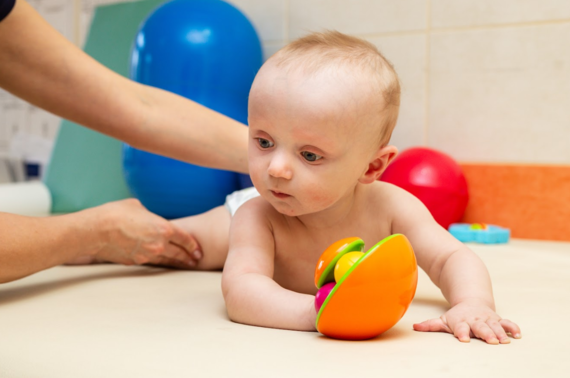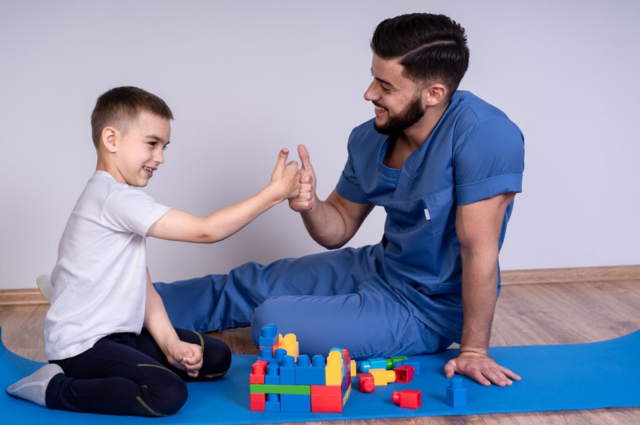As they say, ‘A mother’s love for her child is like nothing else in the world.’ From the moment you find out you’re pregnant to first hearing their heartbeat and finally when the piercing cry echoed through the bright room, you’ll only desire all the best things in life for your offspring.
Growing up, you know your child like the back of your hand. You may have also read books about the what's, how's, whys’, developmental milestones, and relevant articles in raising a child.
However, nothing can prepare you for the inevitable. As a mom, you nurture your child to the best of your abilities to ensure they get the love, care, affection, and nourishment they deserve.
Despite all the labour of love, things don’t go exactly with what you envision to be. A child grows at their own pace and they may act, speak, or socialize differently from children of the same age. Also, accidents may happen no matter how you keep him safe. Some children are born premature or with congenital disabilities and deformities. You may check https://www.connectionstherapies.com/children/physical-therapy/ and other sites to find out more.
Read below to know more about the eight reasons to consult a paediatric physical therapist.
Premature Infants
Expecting mothers and the family are ecstatic with the baby’s arrival. However, due to stress, trauma, or unknown reasons, the baby is born before the expected due date.
Premature birth may hamper a child’s development, such as their expected fine and gross motor skills. An infant may not demonstrate hand fists, grasp reflexes, or be unable to react to environmental stimulation. Paediatric physical therapists conduct a continuous intensive paediatric evaluation to monitor the babies.
Early detection is necessary to determine other factors that hamper a child’s development. Lacking newborn developmental milestones may continue until the toddler stage, affect growth, and result from different undiagnosed conditions.
Medical clearance from the primary paediatrician might also be necessary to take note of the contraindications, risks, and precautions such as heart rates, body temperature, and blood pressure. Therapists are well-endowed with the proper knowledge to ensure the safety of premature infants.
Impaired Sensory Functions
A lot of conditions may result in impaired sensory functions. People have vague knowledge about the significant role of paediatric physical therapists in restoring the sensory integration of a child. A collaboration with a paediatrician will render an excellent medical intervention plan.
Having sensory problems is a significant problem for the child and the family. Unable to feel pain or heat may cause severe injuries. Determining the pathology of the sensory impairment is essential in creating a plan of care.
Paediatric physical therapists have been using Transcutaneous Electrical Nerve Stimulation (TENS) to trigger sensory feedbacks. This breakthrough in medical technology has been changing the lives of children and their families. With the help of occupational therapists, sensory integration exercises are implemented to also help in sharpening the senses of the children.
Developmental Delays
Children and families with developmental delays face unique challenges every day. These conditions may affect a child's cognitive, physical, intellectual, emotional, and social aspects. A variety of medical health professionals team up to help the child’s growth and development so they could have the best quality of life.
Developmental delays put the child at high risk for fractures, dislocations, and accidents. In some cases, mental regression and structural deformities continue to worsen. Thus, lifetime assessment and monitoring are highly essential.
A consultation with a paediatric physical therapist usually begins with the diagnosis of the condition. Early discovery will be an advantage for patient-fold education and prevent injuries that may worsen a child's overall health.
These children must not be isolated due to their fragility but instead encouraged to play outdoors and meet new people. Proper physical therapy rehabilitation will bear fruitful outcomes. Moreover, developmental delays should not hamper a child from entering society and achieving their dreams and goals.

Neuromuscular, Genetic And Orthopaedic Conditions
There is a vast array of neuromuscular, genetic, and orthopaedic conditions. These children have usually been diagnosed when they were still in the womb, at birth, or a few weeks post-natal. They may also even have systemic disorders that put them on a red alert list.
Generally, children with neuromuscular and genetic conditions do not have an average life expectancy. Those with orthopaedic conditions may have multiple surgeries at an early age. Paediatric physical therapists collaborate with the parents’ concerns to create a step-by-step approach in dealing with the children.
Interactive functional activities are beneficial to encourage them that they have the chance to live an everyday and joyful life despite the circumstances. Therapists have good social skills so children do not dread clinic visits and sessions anymore. They make exercises fun and engaging by creating trust and confidence in the children.
Unusual walking or running patterns
Many aspects may contribute to unusual walking or running patterns, such as uneven leg lengths and foot deformities. All of these result in gait disturbances that might affect the child’s day-to-day life.
Gait disturbances may lead to early social intimidation and insecurity as well. A parent must be observant in noticing these abnormalities to avoid emotional distress to her child. With the guide of paediatric physical therapists, shoe lifts are given to children with uneven leg lengths. It will make them walk and run without difficulty and compensate for postural deviations. Foot deformities like club foot, flat foot, or walking on heel or balls of feet may require shoe modifications to avoid further structural deformation.
Falls, Slips, and Sport Injuries
Children have about 300 bones upon birth and the fusing happens later on when they grow up. In their early years, the bones are very soft and delicate. Parents must always safeguard newborns and very young kids, especially the skull to avoid head concussions and skull fractures.
Clumsiness may be an understatement for children’s round-the-clock careless behaviour. They’re always jumping, hurdling, running around, bumping, and breaking things. They’re also prone to falls and slips from chairs, stairs, beds, and windows.
As a parent, you also want to enhance your child’s physical capabilities and talents. By enrolling in sports classes, they also get to socialize with kids their age. As ‘pushing’ accidents among children are inevitable, your child is also vulnerable to acquiring different kinds of sports injuries.
The bones of the child may be at high risk of injury but they also tend to heal faster than adults. In some cases, fractures may just appear to be pain, redness, or swelling in an area. Medications such as topical analgesic creams, hot packs, or cold packs could be then applied at home.
When proper diagnosis and rehabilitation are not made, it may result in recurrence of fracture, chronic pain, discomfort, malformations, or worse, internal infections or haemorrhages.
Immediate medical assessment and intervention might prevent pain, bone deformity, and deeper structure damages. Also, physical therapists will help to restore the injured extremity to its normal performance.
Head Trauma or Spinal Cord Injury
Head trauma due to fall or home accidents and spinal cord injury may result in neurological affections such as abnormal muscle tone, diminished strength, and reflexes or paralysis. These may happen pre-natal, post-natal, or after an injury.
After surgery, consulting a paediatric physical therapist will be wise. Constant rehabilitations to stimulate the muscles and nerves are essential to restore functions of the body and limbs. They also teach proper bed positioning advice and alternative ways to perform the Activities of the Daily Living (ADL).
The goal is to reach the optimal range of motions, strength, basic reflexes, and postural control of the child. Depending on the severity, total recovery may not be guaranteed. However, the quality of life for a child will get better.
Growing Pains
Pain is felt on the lower legs of growing children. The cause may come from a variety of conditions. Growing pains may be triggered by physical activities, yet they can also wake the child at night.
As a parent, you cannot bear to hear your child suffer in pain as it’s heart-wrenching. A routine walk to the park may result in falling or tripping off due to abrupt sharp pain felt on their legs. Further injuries might occur, such as head trauma, if immediate medical attention is not made. Series of blood works and diagnostic tests are essential to determine its pathology.
Paediatric physical therapists team up with the paediatrician to create an effective program. Dynamic tapping, stretching and strengthening exercises, and pain management program are made to help the child continue a normal day-to-day life.
Parents will do anything for their children to ensure they are well-loved, taken-cared of, and have a good life. It’s their primary goal to safeguard the kids from all the harm and illnesses. However, injuries, premature birth, developmental delays, congenital abnormalities, and acquired conditions are unforeseeable. Immediate medical intervention must be sought to prevent further complications.
The parents are the experts on their children’s needs. Thus, consulting a paediatric physical therapy is a wise choice. From newborn to 18 years old, they are well-equipped with knowledge and clinical practice to treat a vast array of conditions. They also teach parents a collaborative learning approach to decrease anxiety, fear and build their confidence. Paediatric physical therapy intervention has been proven to help children heal, restore body functions, and achieve a good quality of life.












